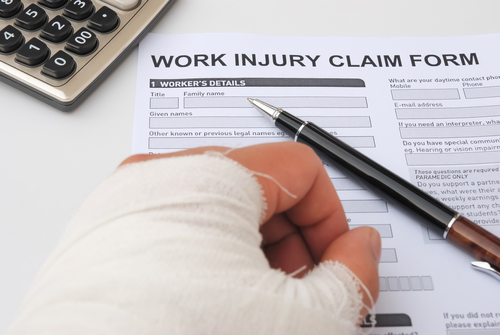Take these steps before, during, and after claims are filed to reduce workers’ comp costs.
 Workers’ compensation costs keep rising. But fortunately, there are many measures your organization can take to reduce costs.Before a Claim Is Ever FiledTo reduce upfront spending on workers’ compensation:
Workers’ compensation costs keep rising. But fortunately, there are many measures your organization can take to reduce costs.Before a Claim Is Ever FiledTo reduce upfront spending on workers’ compensation:
- Implement an effective safety program. This reduces your workers’ comp costs in at least two ways. First, it lessens the likelihood of a claim by reducing the chances that workers will be injured. Second, it makes you more attractive to insurers and third-party administrators, giving you the opportunity to shop around for the best price.
- Make sure your insurer is legit.Most employers focus tightly on claimant fraud (workers filing false workers’ comp claims), but claimant fraud accounts for less than 2 percent of all fraud cases in the workers’ compensation system. Far more common—and more costly—is insurer fraud.
The most common type of insurer fraud is premium theft (or embezzlement). Some agents pocket premiums and then provide false certificates of insurance. Other times, companies are set up to look legitimate and collect premiums—but never pay on claims.Great news! BLR’s renowned Safety.BLR.com® website now has even more time-saving features. Take our no-cost site tour! Or better yet, try it at no cost or obligation for a full 2 weeks.Another type of insurer fraud is insider fraud, which occurs when claims managers, claims administrators, outside investigators, and agents manipulate policies and claims for personal gain. As a control against this type of fraud, you can check with the state to make sure that accurate data are being reported about your company.You should also review your reserves regularly to make sure they’re not being “padded.”During the Initial Claims ProcessOnce a worker has an injury claim, take these steps to minimize costs:
- Provide prompt medical attention.Delayed medical attention for work-related injuries and illnesses can result in increased severity and complications, increasing the ultimate cost of a claim. For example, if a worker suffers a relatively minor back injury, it is better to treat that injury appropriately—sending the worker to the doctor and providing time off and restricted duty, if necessary, to ensure the worker’s full recovery. If you instead ignore the injury, you delay treatment and could end up creating a more serious back injury requiring surgery, extended recovery time, and possibly permanent disability.
- Actively manage claims.The sooner a claim is closed, the better off you’ll be. Maintain clear and frequent communication with your insurer, keeping on top of open claims and making sure the process does not stall. Look out for medical provider fraud—when providers submit claims for work they did not perform. Actively managing your open cases can help catch this kind of fraud.
Your one-stop safety management resource, available 24/7. Go here to take a no-cost site tour or here to try it in your own office!Bringing the Claim to a CloseAs things get “back to normal,” you need to tie up all loose ends:
- Get employees back to work. It can sometimes be difficult to find restricted or light-duty options for workers returning from an injury, but it’s important to try. Getting workers back on the job reduces your wage-replacement and medical costs.
- Maintain contact. Keep in touch with workers who are out and their medical providers. And try to locate rehabilitation in the workplace. Employees who see themselves as productive and connected to their jobs, rather than as patients, are more likely to make a successful return to work.
- Correct the problem that caused the injury.To prevent future injuries—and future claims—address the hazard that caused the injury. Especially be aware of “smaller” claims, like slip, trip, and fall claims, which account for as many as one in five workers’ comp claims. These claims may not seem significant individually, but if they continue to occur, they can add up quickly.

Where can i ask permission to use this article in a safety newsletter?